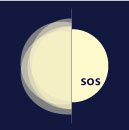|
|
 |
 |
Abstract Review
(Late Submission)
 Corresponding Author Corresponding Author |
|
|
 |
 Authors Authors |
| Name |  | Affiliation |
|
Benkhaldoun Zouhair |
 |
Laboratoire de Physique des Hautes Energies et Astrophysique Cadi Ayyad University |
|
Habib Abdelfetah |
 |
Laboratoire de Physique des Hautes Energies et Astrophysique Cadi Ayyad University |
|
 |
 Abstract Abstract |
| Session |  | 1 (Instrumentation and observations to quantify the magnitude and distribution of atmospheric optical turbulence.) |
| Title |  | 'From the simulated annealing method to Single Star Scidar' |
| Abstract |  | Optical remote sensing of atmospheric turbulence allows us to get informations about the optical quality of atmosphere. A new procedure that we use to obtain atmospheric turbulence profile is
based on the simulated annealing principle.Optical remote sensing of atmospheric turbulence allows us to get informations about the optical quality of atmosphere. A new procedure that we use to obtain atmospheric turbulence profile is
based on the simulated annealing principle. This method allows us to retrieve, for each turbulent layer, the altitude, the integrated value of the refractive-index structure coefficient over the thickness of the turbulent layer, the horizontal wind speed and the standard deviation of
the horizontal wind speed fluctuations. These atmospheric parameters are extracted from the spatio-temporal cross-correlation of a single star scintillation (Single Star SCIDAR). The temporal
sampling, which depends on the camera and computer features, is one profile every 11.2 seconds. Thus, it is possible to get the seeing and other parameters for adaptive optics with the same
temporal sampling. This technique has allowed us to bring to reality the mobile SCIDAR system using a small telescope diameter which is a useful means for site testing. These atmospheric parameters are extracted from the spatio-temporal cross-correlation of a single star scintillation (Single Star SCIDAR). The temporal
sampling, which depends on the camera and computer features, is one profile every 11.2 seconds. Thus, it is possible to get the seeing and other parameters for adaptive optics with the same
temporal sampling. This technique has allowed us to bring to reality the mobile SCIDAR system using a small telescope diameter which is a useful means for site testing.
|
|
Return to Program and Events
|
 |
 |
|



